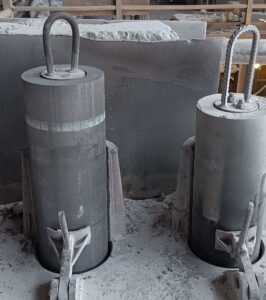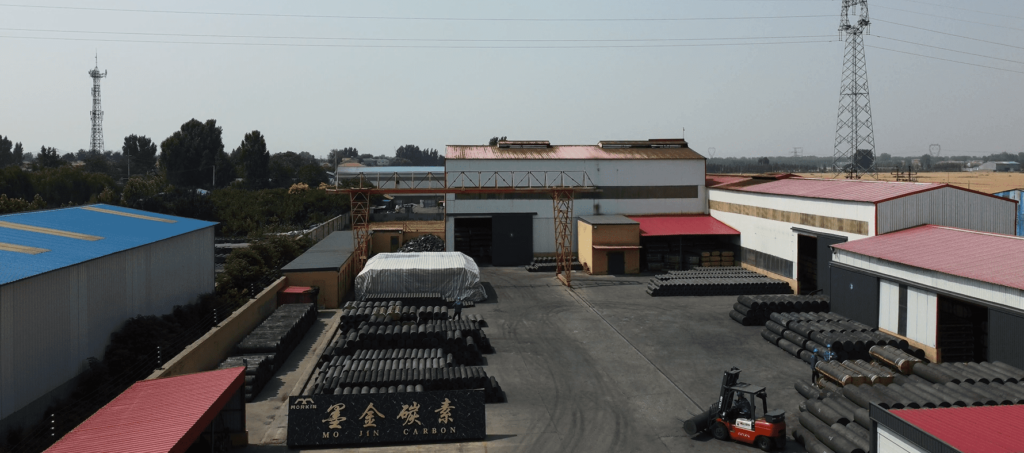High consumption rates of graphite electrodes have long been a concern in steel smelting. In this article, we dissect the underlying causes behind this phenomenon, focusing on three critical aspects that contribute to elevated electrode consumption.
1. THE REASONS FOR ELECTRODE TIP CONSUMPTION
The consumption of electrode tips is primarily composed of four components: evaporation, thermal spalling, dissolution, and chemical reactions. When the temperature reaches 3,650°C, graphite undergoes sublimation. During the arc heating process, the internal temperature of the arc column far exceeds 3,650°C. In the usage of electrodes, thermal stresses arise due to temperature differences among various parts, leading to thermal spalling. As current density increases, thermal spalling intensifies. Inadequate control of bottom-blowing during different refining stages or poor regulation of electrode lifting can result in contact between the molten steel and electrodes, causing electrode dissolution. The low-pressure, high-current power supply system in the LF furnace can lead to a short arc length, with the arc being displaced outward due to magnetic forces. Additionally, the arc column stirs the surrounding slag, subjecting the electrodes to vigorous erosion and corrosion. Electrodes react chemically with highly oxidizing components like FeO, MnO, and other strong oxidizing elements.
2. REASONS FOR GRAPHITE ELECTRODE SURFACE CONSUMPTION
Electrode side consumption refers to the oxidation and consumption of the electrode surface. When the electrode temperature surpasses 400°C, oxygen penetrates the graphite surface for oxidation, albeit at a slow rate. However, as the electrode temperature exceeds 600°C, the oxidation rate accelerates. The oxidation rate on the electrode side primarily depends on the electrode surface temperature, oxygen partial pressure on the electrode surface, and airflow velocity.
3.WHY ELECTRODE BREAKAGE OCCURS
Electrode breakage is an abnormal situation that occurs during the operation of the LF furnace, which can be divided into high breakage and low breakage. The former usually occurs at the highest connection of the electrode column under the action of external force, that is, at the electrode seam under the electrode holder. The latter occurs at the lower end of the electrode, concentrated near the seam at the lowest end of the electrode. Due to the rapid local oxidation, the diameter of the electrode becomes thinner, and it will break when subjected to external force.
In conclusion, understanding the interplay of these three factors driving high graphite electrode consumption is crucial for optimizing industrial processes. By addressing the issues of electrode tip and surface consumption, manufacturers can enhance efficiency, reduce costs, and contribute to sustainable operations.






